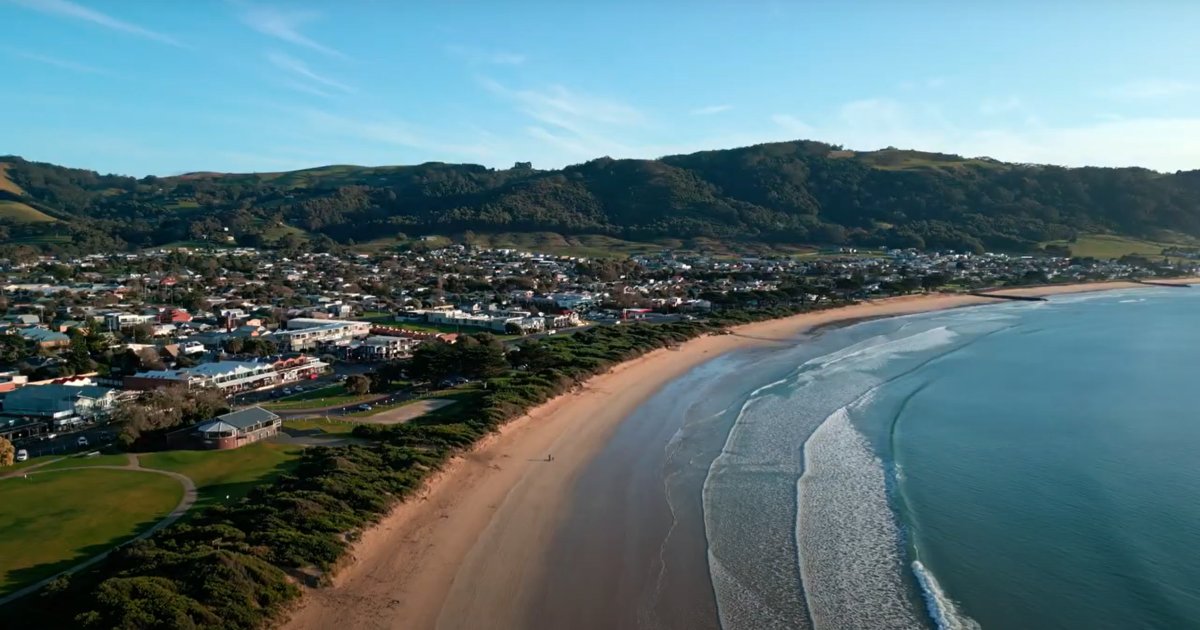
Residents of Victoria’s Apollo Bay are aiming to address local blackouts with a helping hand from renewables and a Community Power Hub. But for other towns and communities facing similar challenges, getting the expert advice needed can be difficult.
Situated around 196 kilometres south-west of Melbourne between the foothills of the Otways and the sea, Apollo Bay is home to approximately 1,790 people and is a popular tourist stop along Great Ocean Road.
Described as “paradise by the sea”, what’s not so attractive is Apollo Bay’s mains grid power quality and reliability. Electricity is supplied through heavily forested terrain and a “bit of bark falling on the lines” causes a blackout according to one resident.
While that could be somewhat an exaggeration, Apollo Bay certainly sees plenty of blackouts. In 2020, the community endured 70 outages. This is inconvenient at the best of times, financially damaging during holidays in particular and downright dangerous in scenarios such as bushfires.
In Apollo Bay, solar panels are a common sight on rooftops and the town punches well above its weight on capacity per capita. More than 398 small-scale PV systems had been installed across the 3233 postcode as at the end of May this year. But these grid connected solar power systems are mostly without batteries featuring backup capabilities. When the grid is out of action, they are of no use to their owners – or anyone else for that matter.
Some residents banded together to look into the potential of a 100% renewables- based microgrid for the town, so in the event of supply disruption Apollo Bay could still function. However, without a technical plan to demonstrate such a microgrid was feasible, the Southern Otway Sustainability (SOS) group weren’t able to move forward.
But with assistance from Barwon South-West Community Power Hub, SOS now have a plan in place for a microgrid powered by solar, wind and a community battery.
Hub Funding Runs Dry
Community Power Hubs funded by the Victorian Government have provided access to skills and expertise required to research, plan, develop, fund and construct community-owned renewable energy projects. While the Victorian Government has been funding various Hubs for the last 5 years, there was nothing allocated in the 2022/23 State Budget. And there’s nothing available for them at Federal level at this point in time.
A campaign co-ordinated by Community Power Agency and Farmers for Climate Action is seeking to change the situation..
“We’re calling for federal and state energy ministers to work together and establish 50 Community Power Hubs around the country, says the campaign website. “Australia can be a renewable superpower – and this one-in-a-generation opportunity must be offered to communities.”
As well as asking Australians to write to their MPs (a base letter is provided to help), the Repower Our Communities initiative has set up a petition that submits to Federal Energy Minister Chris Bowen. Unlike his predecessor, Minister Bowen may actually sit up and take notice; particularly given his fetish penchant for community batteries.

 RSS - Posts
RSS - Posts



70 outages in 2020? ;shudder;
Is 398+ small-scale systems actually above the average? I had a quick look up a few postcodes – Apollo Bay’s 3233, Canberra’s 2600, my own, and another I’m familiar with. Using SQ figure via https://www.solarquotes.com.au/location/apollo-bay-3233-vic/ etc, I come up with
Apollo Bay – 1 system per 4.05 people, 1.47 kW per person, and 19 solar panel systems per 100 dwellings
Canberra – 1 system per 9.26 people, 1.11 kW per person, and 20 solar panel systems per 100 dwellings
Local – 1 system per 3.45 people, 1.58 kW per person, and 66 solar panel systems per 100 dwellings
Other – 1 system per 3.99 people, 1.08 kW per person, and 62 solar panel systems per 100 dwellings
NB: The average is 34 solar panel systems per 100 dwellings. What’s the average systems per people or kW per persons? What stats do the teal electorates have, or the leading postcodes if they aren’t actually teal?
A quick look …
Warringah | Manly – 1 system per 6.30 people, 0.17 kW per person, and 5 solar panel systems per 100 dwellings
Wentworth | Darling point – 1 system per 82.29 people, 0.09 kW per person, and 2 solar panel systems per 100 dwellings.
If the above is correct, teal voters aren’t prepared to spend their own money on solar systems. That seems odd, or worse, exceedingly hypocritical. Does SQ have better figures somewhere?
> If the above is correct, teal voters aren’t prepared to spend their own money on solar systems. That seems odd, or worse, exceedingly hypocritical.
Why is this hypocritical? Perhaps these voters are for collective climate action at a government level, instead of leaving it to the individual.